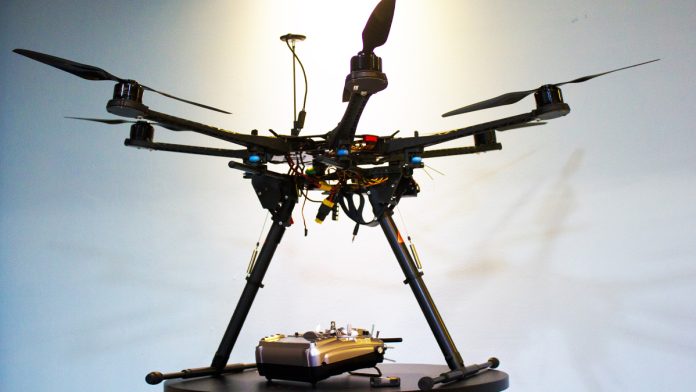In today’s film industry, innovative motor technologies are transforming filmmaking techniques. This article examines cutting-edge solutions, from stabilization systems and robotic controls to virtual reality integrations and futuristic trends, that empower directors to craft visually stunning narratives. Each section explores a unique facet, highlighting enhanced precision and creative possibilities. Embracing The Role of Motors in Cinematic Innovations, these advancements merge art and technology to redefine storytelling.
| Table of Contents | |
|---|---|
| I. | Motorized Camera Stabilization Systems |
| II. | Robotic Camera Motion Control |
| III. | Drone Cinematography and Flight Mechanics |
| IV. | Automated Dolly and Rail Systems |
| V. | Integration of Motors in Virtual and Augmented Reality Production |
| VI. | High-Precision Actuation in Set Transitions and Scene Manipulation |
| VII. | Smart Motors: AI-Driven Motion Control |
| VIII. | Advanced Electromechanical Control Systems and Feedback Loops |
| IX. | Impact of Brushless DC (BLDC) Motors on Cinematography |
| X. | Integration with Motion Capture and Computer Vision Systems |
| XI. | Emerging Trends and Future Technologies in Motor-Driven Filmmaking |
Motorized Camera Stabilization Systems
Motorized camera stabilization systems eliminate unwanted shakes, delivering smooth and immersive footage. Leveraging precise motors and advanced control algorithms, these systems allow seamless movement during high-speed or complex shots. Filmmakers benefit from enhanced stability and clarity, vital for creating engaging narratives. Embracing The Role of Motors in Cinematic Innovations, these stabilization tools set new creative benchmarks in dynamic cinematography.
Robotic Camera Motion Control
Robotic camera motion control systems enable intricate, repeatable movements ideal for complex cinematic sequences. By automating camera actions with high accuracy, they facilitate precise shot replication and dynamic angle transitions. These systems expand creative horizons while ensuring consistency across takes. Embracing The Role of Motors in Cinematic Innovations, robotic controls have elevated film production capabilities and streamlined the execution of sophisticated camera movements.
Drone Cinematography and Flight Mechanics
Drones equipped with advanced motors have revolutionized aerial cinematography, offering flexible viewpoints and precise maneuverability. Enhanced flight mechanics allow for agile movements and stable high-altitude shots, dramatically reshaping storytelling perspectives. Embracing The Role of Motors in Cinematic Innovations, drone cinematography delivers breathtaking vistas and dynamic angles that enrich visual narratives in modern film production.
Automated Dolly and Rail Systems
Automated dolly and rail systems provide fluid, programmable camera movements along predetermined tracks. Their motorized precision facilitates smooth transitions and coordinated scene movements, capturing cinematic sequences with impeccable timing. These systems reduce manual intervention while elevating film quality. Embracing The Role of Motors in Cinematic Innovations, automated solutions ensure repeatable, high-quality shots that enhance the director’s vision.
Integration of Motors in Virtual and Augmented Reality Production
Motors integrated in virtual and augmented reality production power immersive and interactive camera systems that adapt fluidly within digital environments. These systems synchronize physical movements with virtual cues, creating lifelike experiences for audiences. Embracing The Role of Motors in Cinematic Innovations, VR/AR setups benefit from precise motor control to bridge the gap between traditional cinematography and futuristic storytelling.
High-Precision Actuation in Set Transitions and Scene Manipulation
High-precision actuators enable seamless set transitions and dynamic scene manipulations, critical in constructing visually compelling narratives. Motor-driven actuation allows for subtle adjustments and rapid changes in scale or focus, redefining set dynamics. Embracing The Role of Motors in Cinematic Innovations, these systems contribute to fluid storytelling by controlling intricate set elements with remarkable accuracy.
Smart Motors: AI-Driven Motion Control
AI-driven smart motors integrate artificial intelligence to optimize motion control in complex filming scenarios. These motors adapt to real-time conditions, enhancing coordination and precision for smooth, error-free movements. Embracing The Role of Motors in Cinematic Innovations, smart motors empower filmmakers with adaptive performance capabilities, ensuring that creative visions are realized with technical excellence and innovation.
Advanced Electromechanical Control Systems and Feedback Loops
Advanced electromechanical control systems coupled with robust feedback loops deliver exceptional precision in camera movement and positioning. This technology actively monitors and adjusts motor performance to maintain stability and accuracy throughout filming. Embracing The Role of Motors in Cinematic Innovations, these systems guarantee consistent, high-quality visual output that meets the stringent demands of modern cinematic production.
Impact of Brushless DC (BLDC) Motors on Cinematography
Brushless DC motors provide superior efficiency, lower maintenance, and enhanced performance in dynamic camera systems. Their smooth operation and longevity make them ideal for intricate camera rigs and stabilization equipment. Embracing The Role of Motors in Cinematic Innovations, BLDC motors have become a cornerstone of modern cinematography, ensuring reliability and precision for cutting-edge film productions.
Integration with Motion Capture and Computer Vision Systems
The seamless integration of motors with motion capture and computer vision systems elevates tracking accuracy and dynamic scene analysis. These combined technologies facilitate real-time adjustments during filming, ensuring synchronization between physical and digital elements. Embracing The Role of Motors in Cinematic Innovations, such integrations support advanced creative workflows and deliver immersive visual experiences that redefine audience engagement.
Emerging Trends and Future Technologies in Motor-Driven Filmmaking
Emerging technologies in motor-driven filmmaking continue to push creative boundaries through enhanced automation, precision, and interactivity. Innovations such as adaptive AI controls, modular rigs, and real-time feedback systems signal a transformative future. Embracing The Role of Motors in Cinematic Innovations, these trends promise to revolutionize visual storytelling, blending art and technology to create ever more engaging and dynamic cinematic experiences.

